by Guillemette Barthouil
Dreams are in season. Days blur into nights,
the northern darkness plays with our minds.
We awake with cake: our dreamed christmas cake –
a midwinter feast to celebrate the light.
Longer days – a taste
of what has and is to come.
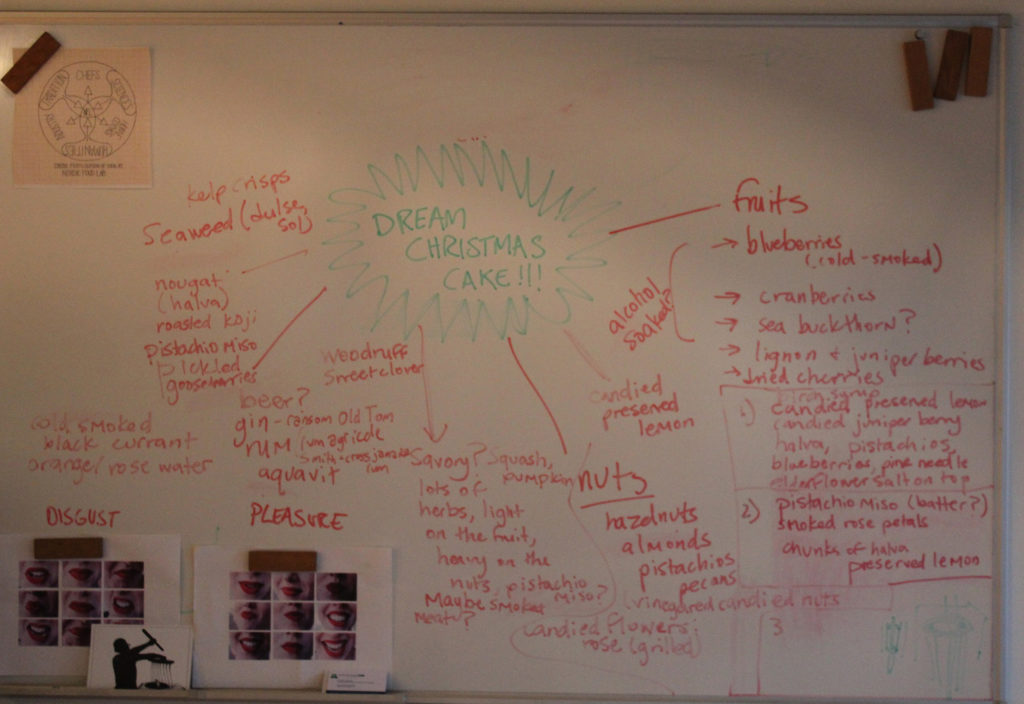
We have had one of our whiteboards emblazoned for months with the phrase “DREAM CHRISTMAS CAKE” and filled upwith all sorts of related brainstorms. Then, in late fall, the Sustainable Food Trust asked us to make a dessert for a conference they were organising in London entitled ‘True Cost Accounting: Food and Farming’ – a key issue in our current food system. The event was to be held in early December. It was close enough to Christmas: time to actually make the cake we had been dreaming up for months.
Traditionally, much of the food eaten at Christmas is preserved in one way or another – dried, cured, smoked, fermented, combination thereof. But what about making the cake itself the way of preserving? English Christmas puddings, cakes, and mince pie seem to have evolved from the same fifteenth-century process of preserving meat [1]. In autumn, when fodder was dwindling, farmers would slaughter the surplus livestock. The meat was then preserved in a pastry case and mixed with dried fruit to prevent spoilage. Over time, dried fruits have become the main component of the sweetened pudding, with suet reminding us of its meat-based history. The alcohol component has been present at least since the 19th century, when Christmas pudding and cake as a dessert rather than a savoury course (‘Christmas pottage’) emerged as the now traditional dish [2]. It is likely, though, that alcohol appeared in prior recipes, for its abilities to enhance both preservation and enjoyment. British gentlemen (including our beloved head of research and development, a Scot) will tell you that the best puddings are at least one year old, the best being considerable older, doused in alcohol every once in a while to preserve it. Bloody English. [ed. – It should be noted that the author of this post is herself French – enough said.]
As we began to experiment in the kitchen, we started to favour pudding over cake, for its flavour, texture, and pliability. Then, in trying to source ingredients from our landscape while keeping the taste identity of a Christmas pudding, we slightly adapted the classic recipe. We adopted bone-marrow over suet for its delicate yet meaty and distinctly umami component. The liquoricey, clovey, and mineral notes of beet molasses allowed us to forego spices in the mix, while giving the pudding a beautiful dark colour. The addition of a nice dark beer only enhanced the deep, bittersweet, mineral flavour profile of the pudding. Working with the concept of preservation we also decided to make our own raisins. We lacto-fermented grapes – in brine with 2% salt – for 2 weeks and then dehydrated them at 40°C. This process gave the grapes a dried fig taste that fit perfectly with the pudding.
NFL Christmas pudding
100g bone marrow
20g butter
110g breadcrumbs
60g wheat flour
1 tsp baking soda
225g beet molasses
110g raisins
60g dried lacto-fermented grapes
275g dried blackcurrant
1 grated pear
2 tbsp brandy (we used oaked apple cider brandy)
75ml Dark Christmas beer
2 eggs
Freeze the bone marrow. Grate.
Weigh the breadcrumbs, flour and baking soda. Blend with the grated bone marrow.
Melt the butter over low heat. Weigh the molasses. Add them to the mix.
Weigh the dried fruits. Grate the pear. Add to mixture.
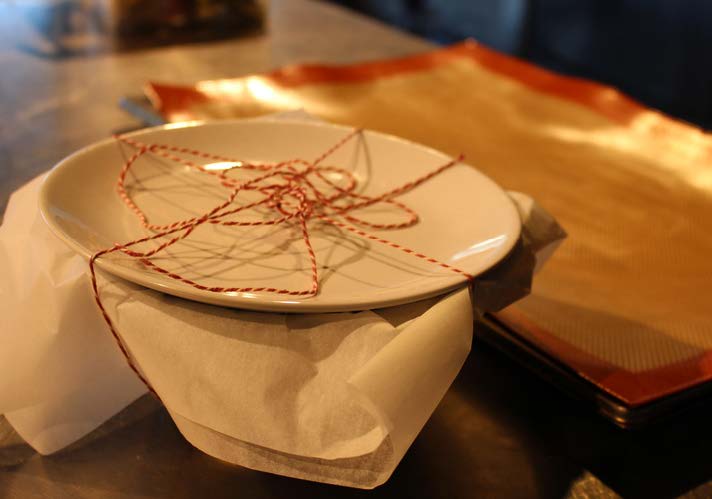
Mix the eggs, brandy, and beer. Add to mixture.
Blend the ingredients thoroughly. Cover and let the dough rest in the fridge overnight.
The next day, press the dough into a stainless steel bowl. Wrap and steam for 8h in a combi oven.
After the pudding is cooked and cooled, pour brandy over. Depending on how much in advance you make your pudding – and how alcoholic you like it – you can repeat this process as many times as you like.
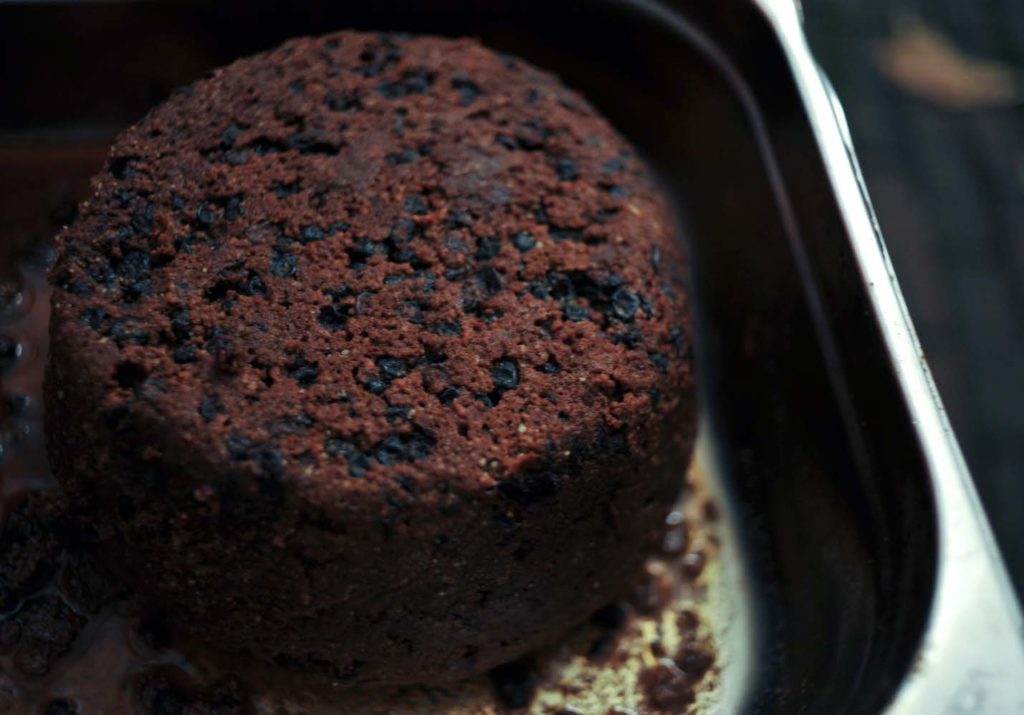
The result was a rich and beautiful pudding, waiting to be paired with the freshness of a fruit. A poached pear seemed like the perfect accompaniment; classic.
Too classic. At this stage, we got stuck. Nothing really sang. We couldn’t find the thing that would make us jump to the next step.
One day, our microbiologist friend and mushroom expert, Sara Landvik, was at the boat for lunch. After lunch we served a version of the dessert for critique, and together we tried to talk it through. All of a sudden Sara said “you should serve it like a mushroom!” That was just the leap we needed. The rest is history.
A pear, poached in a syrup of elderberry, dried chanterelle and labrador tea. Fruity, fragrant, and terpinous as a walk in the woods.
Poached pear
Choose a round-shaped pear variety – we chose Williams.
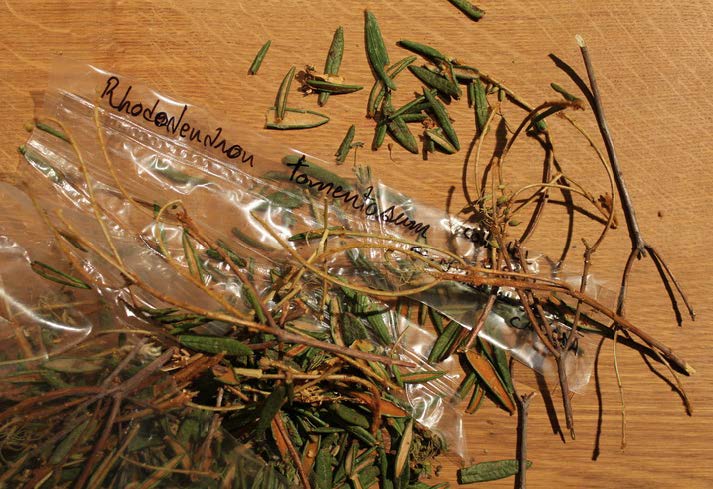
Peel, cut horizontally into two equal parts and carve out the inside with a melon baller, leaving edges of around 0,5 cm. With a turning knife remove the stalk and the calix end of the fruit.
For the syrup, boil 1L of water with 100g of sugar and 100g of elderberries.
10 minutes before poaching the pears, add 15g of dried chanterelles and 5g of labrador tea, Rhododendron tomentosum.
Strain the syrup and poach the pears for 10 minutes.
Once poached, remove the pears and reduce the syrup to a fifth of its original volume. Pour the syrup over the pears so they become bright red.
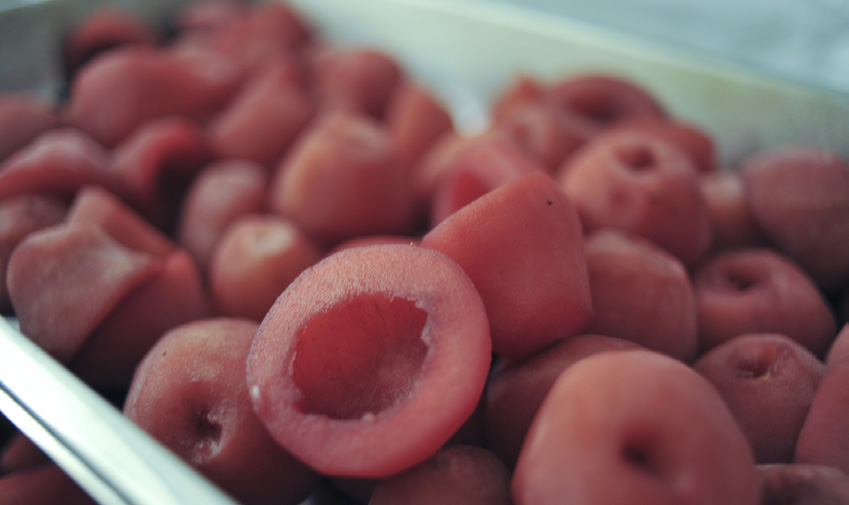
Stuff the pears with approximately 30g of the soaked Christmas pudding, shaping it with your finger as if it were the stalk of a mushroom supporting the fruiting body of the pear. The pudding should stick out of the pear about 1 to 2 cm. One pudding should yield enough for around 50 mushrooms.
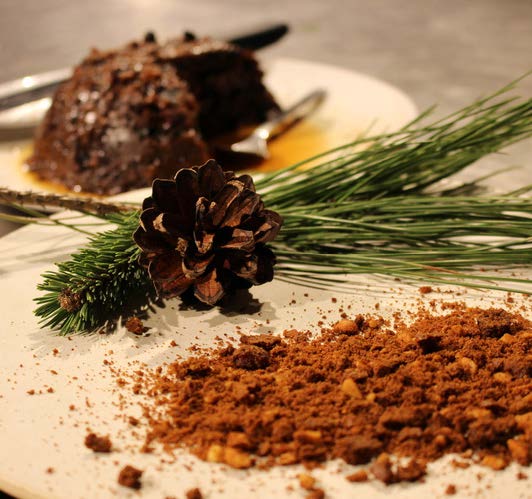
Cheese dots
Take 150g of Stichelton cheese (delicious English raw milk blue cheese), mix it in a thermomix with 150g of cow cream 38% and 1,5g of Xanthan. You should obtain a soft yet solid paste with a mild flavour of Penicillium roquefortii.
Fill a pastry bag, cut 3 mm off the end and create dots of cheese on the poached pear, transforming it into the classic fairytale mushroom, Amanita muscaria, the fly agaric.
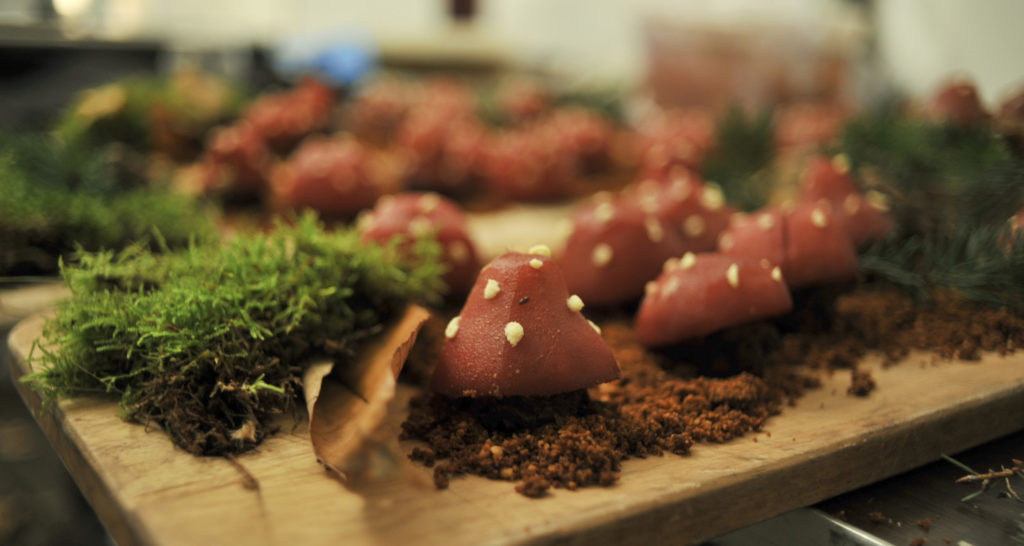
Amanita muscaria
Like children dancing around the Christmas tree, we were super excited about our wild mushroom Christmas pudding. Tasting, critiquing, finding new ideas and pairing – we tried and tried again. Though something was still missing. What did we want to eat most when we were playing in the forest as kids? What lies under the underbrush, the result of fungi digesting and mulch compacting, the foundation of the forest? Earth; of course. Mother Earth.
Edible soil
200g wheat flour
120g butter
140g beet molasses
200g toasted hazelnuts coarsely grounded
30g finely grounded toasted koji
10g porcini powder
1 tsp baking soda
2 eggs
Mix the flour, hazelnuts, koji, porcini powder and baking soda together.
Melt the butter over very low heat.
Add the butter, beet molasses and eggs.
Mix the ingredients together, working the dough as little as possible.
Spread on a baking sheet approximately 0,5cm thick and cook at 160°C for 20 minutes.
Once cooked, dehydrate the cake overnight in a dehydrator or in the oven at around 45°C.
Crumble.
Sweet Amanita
Victorian plum pudding with bone marrow and berries, poached English pears, Stichelton cheese and edible soil.
Oh Sweet Amanita!
Pick the right one, enjoy your trip and see you in the new year!
[1] Black, M. 1981. “The Englishman’s Plum Pudding” in History Today, Volume 31, Issue 12
[2} Davidson, Alan. The Oxford Companion to Food. Oxford: Oxford University Press, 2000. p.184-5.
